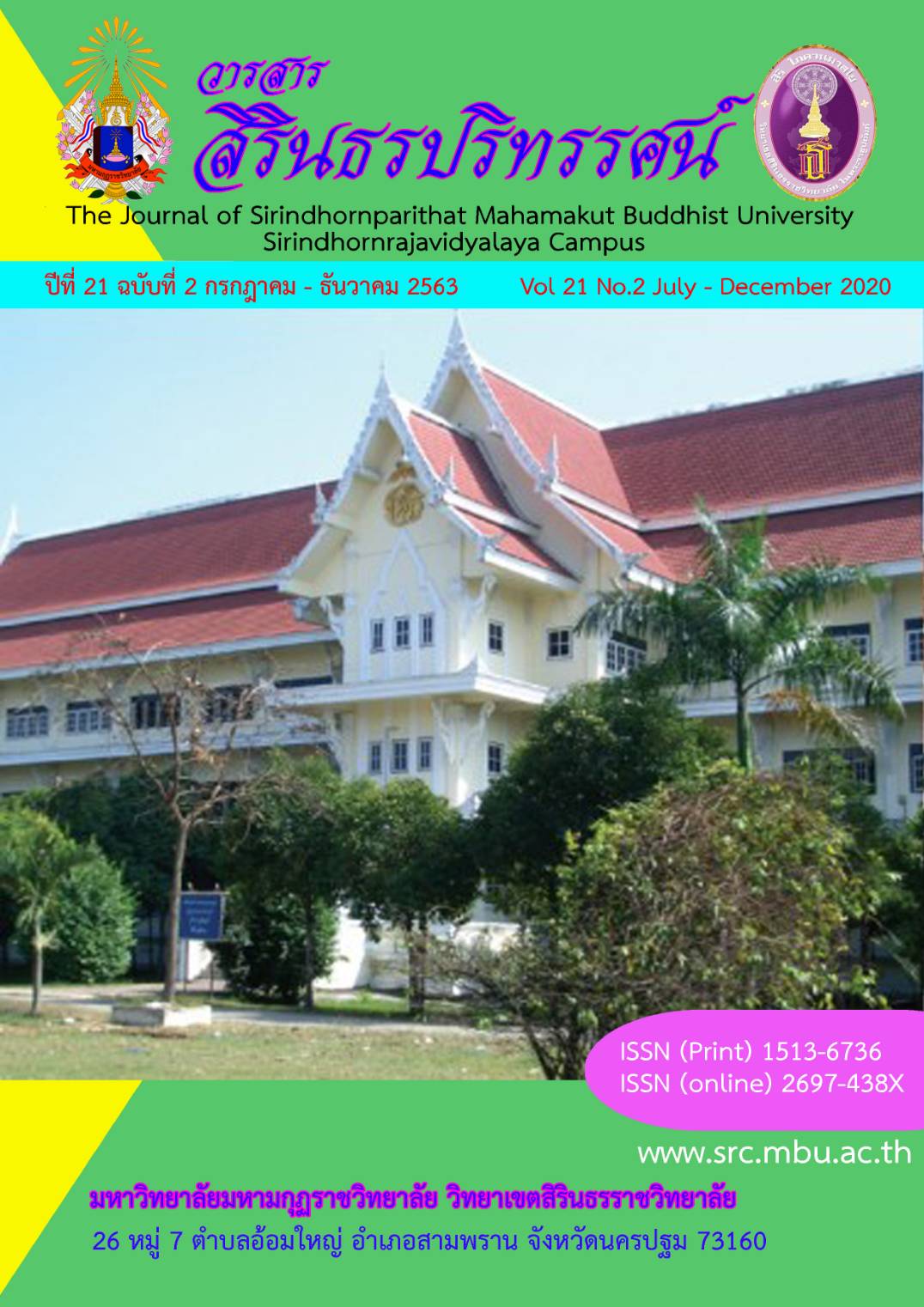Collaborative Governance’s Network Building for Human Capital Development in Provincial Administrative Organization
Keywords:
Provincial Administration Organizations, Network Building, Collaborative Governance, Human Capital DevelopmentAbstract
The objectives of this research are 1) to explore processes of collaborative governance’s network building for human capital development in three Provincial Administration Organizations 2) to analyze relevant factors that help collaborative governance’s network building for human capital development in those Organizations, and 3) to analyze or identify key factors that help collaborative governance for human capital development in those Organizations to a success. The study applies a qualitative research method by collecting data from relevant documents and in-depth interviewing with key informants from three successful Provincial Administration Organizations (PAO), i.e., Krabi PAO, Surat Thani PAO, Chiang Mai PAO as well as their related administrative collaboration network partners.
The research found that the process of collaborative governance’s network building for human capital development is composed of: firstly, negotiations among all concerned parties; secondly, building mutual trust; thirdly, creation consensus of the collaboration; fourthly, building mutual understandings; and fifthly, creation tangible results in the midst of the works. In addition, the research also found that relevant factors help create collaborative governance’s network building for human capital development consist of 1) differences in power, duties, resources, and potentials; 2) motivations for coming to work in a collaborative manner; 3) mutually assistances experienced from the past; 4) creation of a structure that conducive to such cooperation, and 5) the role of leader to lead cooperation. As far as the last finding is concerned, the research was able to identify the following key factors that bring success to the three PAO.: 1) the important role of the coordinator who possesses certain characteristics and capabilities; 2) the teamwork of the coordinator’s members; 3) the potential of the core coordinating organization; 4) the proactive cooperation efforts of major collaboration networks’ partners; and 5) the proactive cooperation efforts of collaboration networks’ supporting partners.
References
ธีรวุฒิ ก่ายแก้ว. (2556). “การสร้างเครือข่ายทางสังคม:กรณีศึกษานักฟุตบอลสมัครเล่น ในกลุ่มกรุงเทพเหนือ”. วิทยานิพนธ์ศิลปศาสตรมหาบัณฑิต (การบริหารการพัฒนาสังคม). สถาบันบัณฑิตพัฒนาบริหารศาสตร์.
ประภาพรรณ อุ่นอบ. (2552). เครือข่าย:กลไกสำคัฐในการขับเคลื่อนงานพัฒนาอย่างบูรณาการเชิงพื้นที่. กรุงเทพมหานคร: หจก.เอส.พี.กราฟฟิค พรีเพลส พริ้นติ้ง.
ปริญญา หวันเหล็ม. (2558). “ความร่วมมือระหว่างองค์กรภาครัฐและองค์กรพัฒนาเอกชน กรณีศึกษาการจัดสวัสดิการด้านการศึกษาให้กับบุตรหลาน แรงงานต่างชาติในศูนย์คาทอลิกนักบุญยออาคิมเพื่อผู้อพยพย้ายถิ่น จังหวัดสมุทรสาคร”. วิทยานิพนธ์สังคมสงเคราะห์ศาสตรมหาบัณฑิต. มหาวิทยาลัยธรรมศาสตร์.
พระดาวเหนือ บุตรสีทา. (2557). “การสร้างเครือข่ายและการจัดการเครือข่าย การเผยแผ่พระพุทธศาสนาของชุมชนพบธรรมนำสุข อำเภอทุ่งเสลี่ยม จังหวัดสุโขทัย”. วิทยานิพนธ์ศิลปศาสตรมหาบัณฑิต. สถาบันบัณฑิตพัฒนบริหารศาสตร์.
ภัทรวรรธน์ นิลแก้วบวรวิชญ์. (2559). “รูปแบบการพัฒนาเครือข่ายความร่วมือทางวิชาการของสำนักงานเขตพื้นที่การศึกษาประถมศึกษา”. ดุษฎีนิพนธ์ปรัชญาดุษฎีบัณฑิต (การบริหารการศึกษา). มหาวิทยาลัยบูรพา.
รสคนธ์ รัตนเสริมพงศ์. (2550). “การบริหารท้องถิ่น” ใน ประมวลสาระชุดวิชาการบริหารงานภาครัฐหน่วยที่ 6-10. พิมพ์ครั้งที่ 3. นนทบุรี: โรงพิมพ์มหาวิทยาลัยสุโขทัยธรรมาธิราช.
วสันต์ เหลืองประภัสสร์และคณะ. (2557). “การศึกษาและรวบรวมตัวอย่างการบริหารจัดการบ้านเมืองแบบร่วมมือกันระหว่างภาครัฐ องค์กรปกครองส่วนท้องถิ่น ภาคธุรกิจเอกชน ภาคประชาสังคม และชุมชน”. รายงานการวิจัยเสนอต่อสำนักงานคณะกรรมการพัฒนาระบบวิชาการ. กรุงเทพมหานคร : มหาวิทยาลัยธรรมศาสตร์.
สถาบันพระปกเกล้า. (วิทยาลัยพัฒนาการปกครองท้องถิ่น). (2552). เคล็ดลับการจัดบริการสาธารณะท้องถิ่น. กรุงเทพมหานคร:บริษัท ส เจริญการพิมพ์ จำกัด.
สถาบันพระปกเกล้า. (วิทยาลัยพัฒนาการปกครองท้องถิ่น). (2559). รางวัลพระปกเกล้า 2559 เกียรติภูมิท้องถิ่น. นนทบุรี : บริษัท เอ.พี.กราฟิค ดีไซน์และการพิมพ์ จำกัด.
สถาบันพระปกเกล้า. (วิทยาลัยพัฒนาการปกครองท้องถิ่น). (2561). รางวัลพระปกเกล้า 2561 เกียรติภูมิท้องถิ่น. นนทบุรี:บริษัท เอ.พี.กราฟิคดีไซน์และการพิมพ์ จำกัด.
สมัญญา โพธิ์วิจิตร. (2555). “การบริหารจัดการเครือข่ายความร่วมมือในการจัดระดับความเหมาะสมของรายการโทรทัศน์”. วารสารการเมือง การบริหารและกฎหมาย ปีที่ 8 ฉบับที่ 1.
สุรินธร ชาญสมร. (2559). “ความร่วมมือในแบบเครือข่ายกับโครงสร้างชุมชนแห่งการอยู่ร่วมกันและเข้าถึงได้ในอาเซียน กรณีศึกษาชุมชนต้นแบบเกาะเกร็ด จังหวัดนนทบุรี”. การค้นคว้าอิสระตามหลักสูตรรัฐศาสตรมหาบัณฑิต (การเมืองการปกครอง). มหาวิทยาลัยธรรมศาสตร์.
สำนักงานคณะกรรมการพัฒนาเศรษฐกิจและสังคมแห่งชาติ. (2559). “แผนพัฒนาเศรษฐกิจและสังคมแห่งชาติฉบับที่ 12 (พ.ศ. 2560-2564)”. ราชกิจจานุเบกษา เล่มที่ 133 ตอนที่ 115 ก หน้า 1 ลว. 30 ธันวาคม 2559.
Ansell, C. and Gash, A. (2008). “Collaborative Governance Theory and Practice”. journal of Public Administration Research and Theory, 18:543-571.
Osborne (ed.). Stephen P. (2010). The public Governance: Emerging perspectives on the theory and practice of public governance. London and New York: Rout ledge.
Sullivan, H. and Skelcher, C. (2002) Working Across Boundaries: Collaboration in Public Services. New York: Pala grave Macmillan.
Downloads
Published
Issue
Section
License
บทความที่ได้รับการตีพิมพ์เป็นลิขสิทธิ์ของ มหาวิทยาลัยมหามกุฏราชวิทยาลัย วิทยาเขตสิรินธรราชวิทยาลัย
ข้อความที่ปรากฏในบทความแต่ละเรื่องในวารสารวิชาการเล่มนี้เป็นความคิดเห็นส่วนตัวของผู้เขียนแต่ละท่านไม่เกี่ยวข้องกับหาวิทยาลัยมหามกุฏราชวิทยาลัย วิทยาเขตสิรินธรราชวิทยาลัย และคณาจารย์ท่านอื่นๆในมหาวิทยาลัยฯ แต่อย่างใด ความรับผิดชอบองค์ประกอบทั้งหมดของบทความแต่ละเรื่องเป็นของผู้เขียนแต่ละท่าน หากมีความผิดพลาดใดๆ ผู้เขียนแต่ละท่านจะรับผิดชอบบทความของตนเองแต่ผู้เดียว




